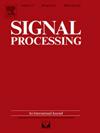Simultaneously transmitting and reflecting (STAR) RIS enhanced covert transmission with noise uncertainty
IF 3.4
2区 工程技术
Q2 ENGINEERING, ELECTRICAL & ELECTRONIC
引用次数: 0
Abstract
To break through the topological restriction imposed by conventional reflecting/transmitting-only reconfigurable intelligent surface (RIS) in covert communication systems, a simultaneously transmitting and reflecting RIS (STAR-RIS) is adopted in this paper. A transmitter Alice communicates with both users Willie and Bob, where Bob is the covert receiver. Moreover, Willie also plays a warden seeking to detect the covert transmission since it forbids Alice from illegally using the communication resources like energy and bandwidth allocated for them. To obtain the maximum covert rate, we first design the transmission schemes for Alice in the case of sending and not sending covert information and further derive the necessary conditions for Alice to perform covert communication. We also deduce Willie’s detection error probability, the minimum value of which is obtained as well in terms of an optimal detection threshold. Furthermore, through the design of Alice’s transmit power for covert transmission together with transmission and reflection beamforming at STAR-RIS, we achieve the maximum effective covert rate. Our numerical results show the correctness of the proposed theorems and indicate that utilizing STAR-RIS to enhance covert communication is feasible and effective.
求助全文
约1分钟内获得全文
求助全文
来源期刊

Signal Processing
工程技术-工程:电子与电气
CiteScore
9.20
自引率
9.10%
发文量
309
审稿时长
41 days
期刊介绍:
Signal Processing incorporates all aspects of the theory and practice of signal processing. It features original research work, tutorial and review articles, and accounts of practical developments. It is intended for a rapid dissemination of knowledge and experience to engineers and scientists working in the research, development or practical application of signal processing.
Subject areas covered by the journal include: Signal Theory; Stochastic Processes; Detection and Estimation; Spectral Analysis; Filtering; Signal Processing Systems; Software Developments; Image Processing; Pattern Recognition; Optical Signal Processing; Digital Signal Processing; Multi-dimensional Signal Processing; Communication Signal Processing; Biomedical Signal Processing; Geophysical and Astrophysical Signal Processing; Earth Resources Signal Processing; Acoustic and Vibration Signal Processing; Data Processing; Remote Sensing; Signal Processing Technology; Radar Signal Processing; Sonar Signal Processing; Industrial Applications; New Applications.
 求助内容:
求助内容: 应助结果提醒方式:
应助结果提醒方式:


